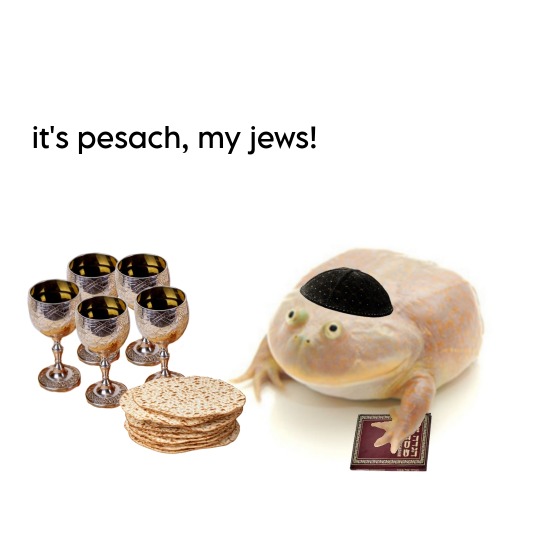Text

Passover Haggadah from Germany, written by Abraham Sofer in 1756
121 notes
·
View notes
Text
FINE.
YOU WANT MOSES?
YOU'RE GONNA GET MOSES
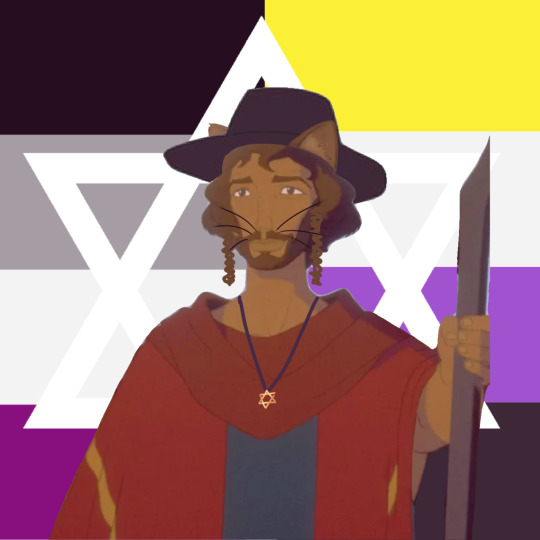
who gave me access to editing software 💀
228 notes
·
View notes
Text

THURSDAY HERO: Niuta Teitelbaum
Niuta Teitelbaum was a Jewish resistance fighter in Poland who despite her innocent, youthful appearance was a deadly assassin who shot dead four Nazi officers.
Born in Warsaw in 1917, Niuta was raised in a religious Jewish family. When the Nazis invaded Poland in 1939, Niuta was one of the first volunteers to join the underground resistance movement. She said, “I am a Jew. My place is in the struggle against the Nazis for the honor of my people and for a free Poland!” Niuta was 22 but petite and baby-faced, she looked much younger. Wearing her blonde hair in two long braids, she resembled a Polish farm girl, which enabled her to move around Warsaw without arousing suspicion among the Nazi guards stationed around the city. Niuta transported weapons and helped Jews find safe havens even as she put herself in danger repeatedly.
With audacious bravery, sometime around 1942 Niuta approached the Nazi headquarters in Warsaw. Questioned by the officer guarding the front door, Niuta, acting shy and embarrassed, said she needed to see a certain high-ranking German officer. She said it was a “personal matter” implying that she was pregnant out of wedlock. The guard at the door snickered as he told her the officer’s room number and gave her a special pass to enter her supposed paramour’s private office. She thanked him shyly, and walked through the building to her “lover’s” office. Niuta entered the room to find the officer sitting at his desk. Before he could say a word she pulled out a pistol with a silencer and shot him in the head. He died instantly. Calm and collected, Niuta made her way back through the building to the front door and thanked the guard sweetly.
Because her resistance activities were so secretive, information is incomplete. What is known is that in another startlingly courageous episode, Niuta shot three Gestapo agents, killing two of them and wounding a third. Then she obtained a white lab coat and pretended to be a doctor to gain entry into the agent’s hospital room, and shot him again, killing him this time. Niuta landed a spot on the Nazis’ Most Wanted list, and was given the nickname “Little Wanda with the Braids.”
For three years, Niuta evaded her German pursuers and continued her resistance activities, until she was captured in 1943 and imprisoned with thousands of other Polish Jews in the Warsaw ghetto, where she participated in the famous uprising of April 1943. For most of the ghetto fighters it was a suicide mission; they knew they were likely to die but wanted to go down fighting. Niuta was one of the few who survived the ghetto battles and managed to escape. However, in July 1943, her hiding place in Warsaw was discovered and she was arrested by the Gestapo. Niuta was beaten and tortured for several weeks, but she refused to give information about any other resistance fighters or activities. Niuta was executed by the Germans later that year at age 25.
For her heroic resistance activities, including killing four Nazi officers, we honor Niuta Teitelbaum as this week’s Thursday Hero.
129 notes
·
View notes
Text
80th Anniversary of the Warsaw Ghetto Uprising: "The World Has to Know That We Did Not Go Like Lambs to the Slaughter."
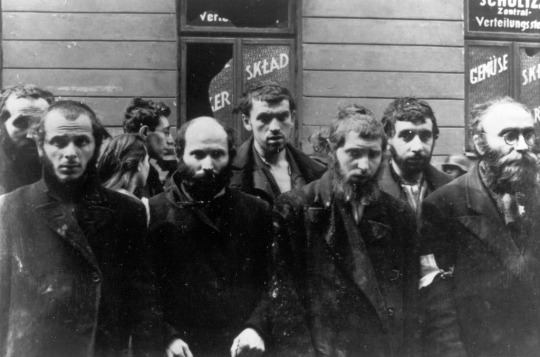


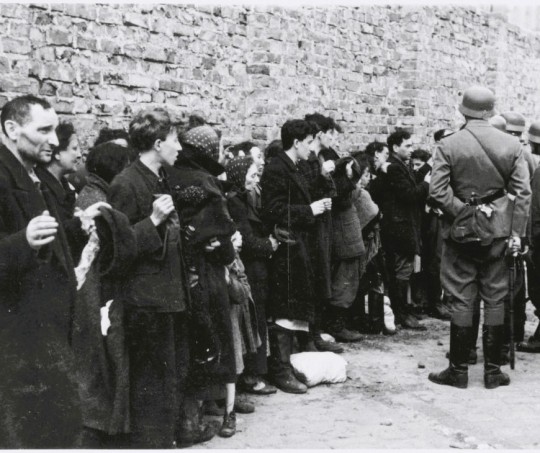
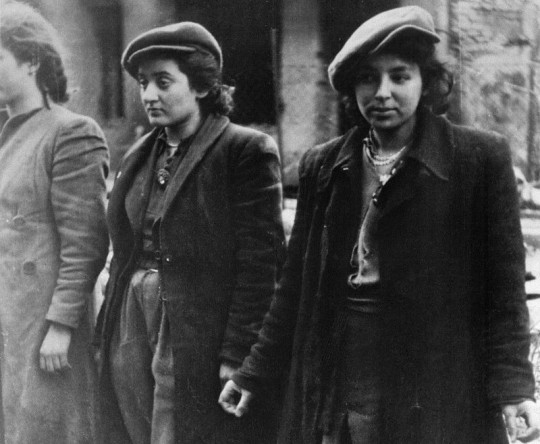
April 19th, 1943 - May 16th, 1943
Warsaw, Poland
“The question is not why all the Jews did not fight, but how so many of them did. Tormented, beaten, starved, where did they find the strength, spiritual and physical, to resist?” – Elie Wiesel
In the morning of April 19th, 1943, on what would be the first night of Passover, the Warsaw Ghetto Uprising began. German troops and SS entered the ghetto to deport its surviving inhabitants to the death camps.
In the summer of 1942, as Jews living in the Warsaw ghetto were deported to Treblinka, reports that made their way back quickly made it clear that "resettlement" meant mass-murder. In response to this, Jews citizens in the ghetto began forming organized resistance forces; the Jewish Combat Organization (ŻOB) and the Jewish Military Union (ŻZW).
Following the January 1943 success of a smaller-scale resistance preventing a deportation attempt, an act that led to the suspension of such deportation efforts by the Nazis, the residents began to secretly build subterranean tunnels and shelters in preparation for a full-scale uprising.
Throughout April rumours swirled of a final deportation of the ghetto's remaining Jews. On the 18th it became clear that German forces, reinforced with artillery and tanks, were moving in to carry out their final action. The alarm was raised, and residents retreated to their underground shelters. They would remain here for the duration of the uprising, refusing to surrender themselves to deportation.
A group of around 700 Jewish resistance fighters, made up of the ŻOB and ŻZW and led by 24-year-old Mordechai Anilevitch, joined together to stage what would be their final stand against the Nazis. These brave young people were malnourished and lacked proper military training, they were equipped with nothing but poor-quality or even homemade weapons and their bare hands.
By contrast German forces numbered 2000, they were well-equipped and well-trained and had advanced knowledge of the existence of these resistance groups.
Despite this stark imbalance, on the first day of the uprising the ragtag Jewish fighters met the invaders head on and successfully forced the Nazis to retreat outside the city walls.
Amongst all of the chaos and destruction all around them, the Jews hiding in the tunnels and bunkers gathered together to celebrate Passover with what little they had, breaking homecooked matzah and drinking illicitly obtained wine.
The Warsaw Ghetto Uprising held strong for a full 27 days, coming to an end on May 16th, 1943. Unable to gain a full advantage, the Germans had resorted to burning the Warsaw Ghetto to the ground in an attempt flush out those in hiding so they could be rounded up.
In the months following the official end of the uprising some Jews remained hiding out in the rubble, periodically attacking German police on patrol.
This was the largest uprising by Jews during World War II and the first significant urban revolt against German occupation in Europe. It inspired many more uprisings, especially amongst Jews in camps and Ghettos.
May Their Memories Be a Revolution
Learn More:
Warsaw Ghetto Uprising | Holocaust Encyclopedia
Holocaust Survivors Describe the Last Passover in the Warsaw Ghetto
Tuesday, Nissan 27, 5783 / April 18, 2023 - Jewish Calendar - On This Day
2K notes
·
View notes
Text
On Twitter there are currently a lot of Christians and Muslims getting really angry about ways that Jews work around restrictions on work during Shabbat, and, like, honestly I do not understand why they care? Just a lot of non-Jews telling nice Orthodox Jews that they’re doing their religion wrong for no reason.
6K notes
·
View notes
Text
Literally me too I thought I was the only one lol
any time i see someone say “Pikuach Nefesh” i read it as “Pikachu Nefesh” and i can’t stop 😭
2K notes
·
View notes
Text
“I definitely didn’t want to root [Corpse Bride] in a specific place, and wasn’t really interested in what real ethnic origins of the tale were, because the thing that got me was the fable aspect of it”⁹.
Jewish legends are, well, legendary. They are filled with mystery, magic, fascinating creatures, wild adventures, and dazzling heroes. But if you ask most people, even most Jews, they may be largely unfamiliar with Jewish folktales outside of the Bible or Fiddler on the Roof. That is until you unravel the way in which Jewish folklore has been commodified and removed from its Jewish roots in order to be suitable for a non-Jewish audience.
This phenomenon is not new and not singular to Jews–not in the slightest. Cultural stories, and so much more, are routinely co-opted and commodified, erasing the culture, religion, and heritage of the original storytellers in order to make the story palatable for audiences outside of the original group. Sometimes so egregiously or viciously that it is largely unrecognizable to those who aren’t intimately familiar enough to spot it.
One such story is, allegedly, The Corpse Bride.
However, Tim Burton would convince you that the story he heard of (allegedly from within Lilith’s Cave) isn’t actually Jewish–in fact, he doesn't even know the origin. In their 2018 YouTube video, Jewish Erasure in Tim Burton Films, channel The Princess and the Scrivener plays a clip of Burton stating, “Joe had heard a little story, like a paragraph, which was an excerpt from an old fable–I don’t even know from what country it came, my recollection is that it didn’t have a specific place of origin. [I] Wasn't really interested in what the real ethnic origins of the tale were, because the thing that got me was the fable aspect of it”⁹.
READ MORE
2K notes
·
View notes
Text
Ashkenormativity was a word that non-Ashkenazi Jewish people used to discuss issues within the Jewish community. It is not for gentiles to use to insert themselves into discourse they have no business in and will never truly understand. Go fuck yourselves.
149 notes
·
View notes
Text
"lol jews find so many loopholes in their own religion they must hate being jewish" damn just say you're uncreative and have never examined your own religious texts further than the exact words written down on the paper. just say you take everything at face value and you never enjoy reading between the lines to gain a new understanding of something. it's ok, we all see it already
3K notes
·
View notes
Text
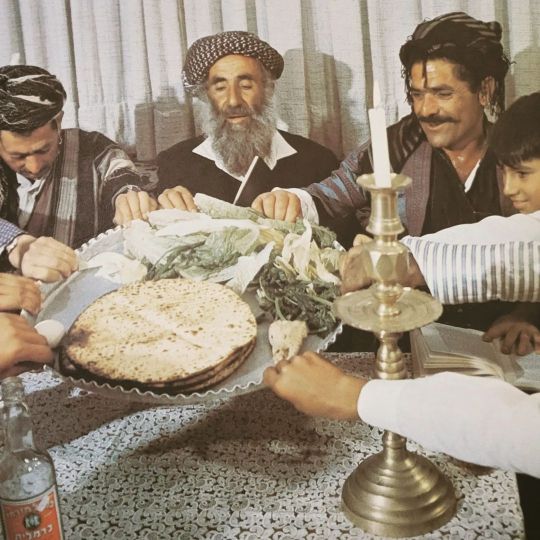
Passover meal at a Kurdish-Jewish family's home, Jerusalem, 1979
487 notes
·
View notes
Text
Antisemitism Required Reading
I get a lot of ignorant comments & tags on my posts about antisemitism, and I’ve already spent way too much time & energy engaging with them. So to preserve my sanity, I’ve made the decision not to engage too deeply with any commenters who haven’t at least read all of these in their entirety:
“Jewish Space Lasers” by Mike Rothschild
“People Love Dead Jews” by Dana Horn
“Jews Don’t Count” by David Baddiel
"More Than a Century of Antisemitism", GEC Special Report
If you’re not Jewish, please read all of this literature before adding anything to my posts about antisemitism.
Jews, please add any books you think should be on the list!
1K notes
·
View notes
Text
Apparently, observant (however you define it) goth Jews are a thing, and I’m glad.
‘Cuz, like, there’s quite a bit of goth sensibility to how I conceptualize God (a radiant darkness) and Torah (which puts us way outside the mainstream).
1K notes
·
View notes
